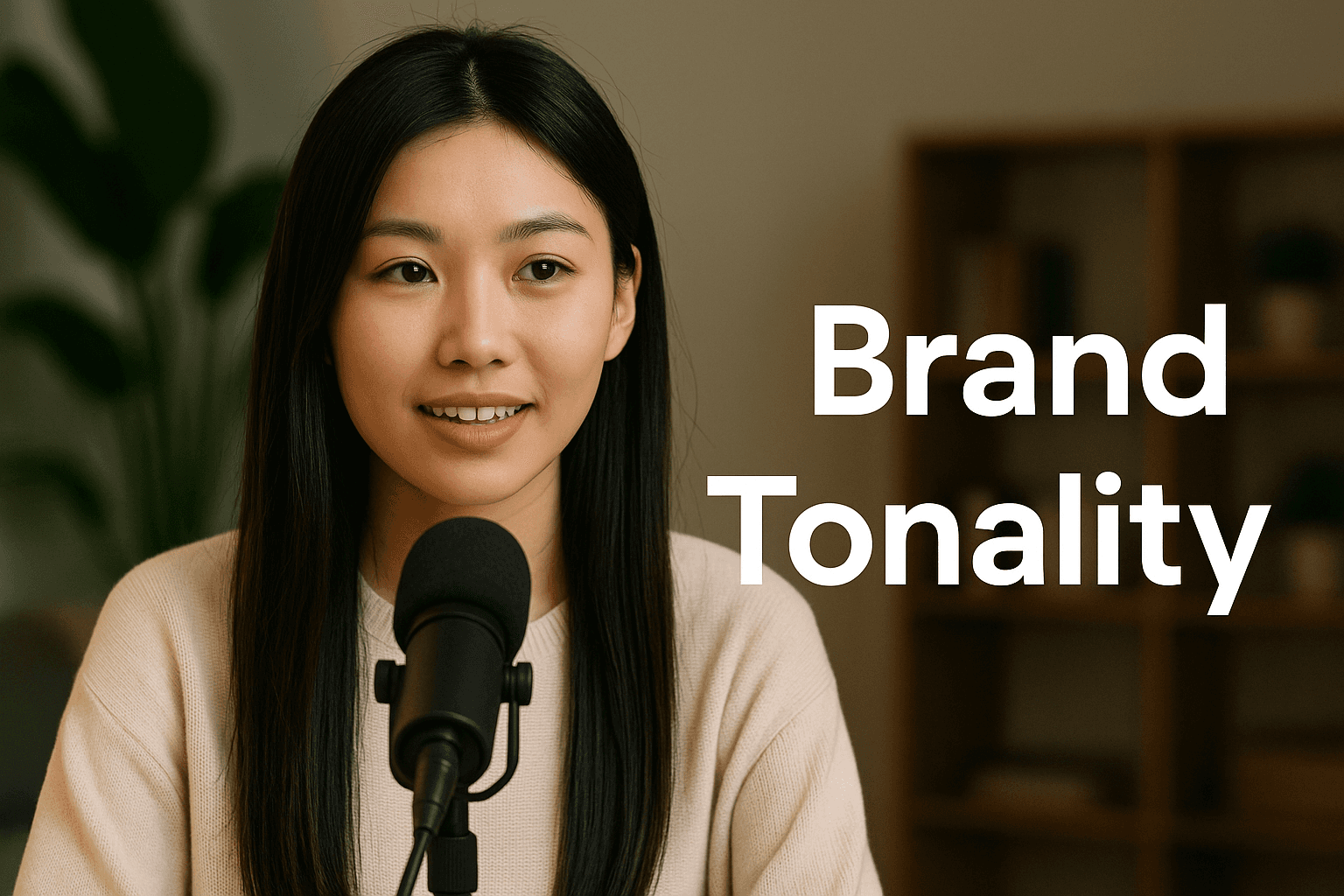Every brand has a tone - the question is whether you're shaping it intentionally. A defined, consistent tone builds trust and directly impacts conversion rate. Here's how to identify, refine, and embed your brand voice across all customer touchpoints - especially shoppable video - to boost sales.
What is brand tonality and why it matters for Shopify brands
Brand tonality is the emotional and linguistic personality of your business. It's how you "sound" and "feel" to your audience across ads, product pages, emails, and social media.
Even if you've never documented it, you have a tone. It's formed by your team's writing style, your visual identity, the creators you work with, and the way you interact with customers.
The problem is, when tone is inconsistent, it erodes trust. A playful Instagram post followed by a stiff product page feels disjointed. That gap creates hesitation - and hesitation kills conversions.
A Sprout Social study found that 65% of consumers feel more connected to brands that use a consistent voice (Sprout Social). In Tellos data, brands that keep tone consistent in their videos see up to 19% higher conversion rates compared to those with mixed messaging.
Why tone consistency is a video-first challenge in 2025
For eCommerce in 2025, your tone isn't just expressed in copy - it's experienced through video. That's because video dominates both discovery and decision-making:
- 87% of consumers say a video convinced them to buy a product or service.
- 91% say they want to see more online videos from brands (Wyzowl).
If your video content feels inconsistent - different creators speaking in clashing styles, product clips that don't match your social presence - shoppers sense it instantly.
How tone impacts conversion rate
Tone is more than "branding polish." It influences:
- Perceived trustworthiness - Consistent tone makes a brand feel established and reliable.
- Clarity - Messaging stays clear when it follows the same patterns and voice.
- Decision speed - As we explored in Choice Overload: The Shopify Conversion Killer, reducing friction speeds up the path to purchase.
When your tone is aligned, shoppers don't have to work to understand who you are or what you stand for. That means less mental load and more confident purchases.
The framework for defining and enforcing your brand tone
Here's a simple but powerful process to lock in your tone and keep it consistent at scale:
1. Audit your current voice
Review social posts, PDP copy, email campaigns, and video scripts. Look for patterns in:
- Vocabulary - Are you using technical jargon, casual slang, or somewhere in between?
- Sentence structure - Short and punchy, or long and descriptive?
- Emotional range - Are you motivational, humorous, empathetic, authoritative?
2. Document tone guidelines
Write down your "do's" and "don'ts":
- Voice pillars - Three to five adjectives that describe your tone (e.g., "optimistic, expert, relatable").
- Style rules - Grammar choices, emoji usage, capitalization preferences, etc.
- Off-limits territory - Topics, jokes, or phrases that don't fit your brand personality.
3. Train your content partners
Brief agencies, influencers, and UGC creators on your tone rules. Encourage authenticity, but keep the core voice intact.
4. Apply it to video content first
Because video is where tone is most noticeable, align it there before anything else. Start with hero products, bestsellers, and top landing pages.
Scaling tone with automation
The fastest way to maintain tone across an expanding content library is to automate its distribution. With Tellos, for example:
- New videos are imported automatically from social channels.
- AI detects and tags the right products in each clip.
- Videos are placed on relevant PDPs, category pages, and the homepage – ensuring tone-consistent content meets shoppers at the right point in their journey.
This removes the manual work of updating placements, while keeping your tone visible exactly where it matters most.
Examples of tone in action
- Beauty brand - A luxury skincare company uses a calm, authoritative tone across all videos, from founder-led tutorials to UGC unboxings.
- Fashion label - A streetwear brand maintains a bold, rebellious voice, even when collaborating with influencers with their own style.
- Home goods store - A warm, conversational tone appears in how-to videos, PDP copy, and customer Q&As, building approachability and trust.
FAQ
-
What is brand tonality in Shopify eCommerce? It's the emotional and linguistic style your brand uses across all touchpoints — from PDPs to social media. It shapes how shoppers perceive and connect with you.
-
Why does tone affect conversion rate? A consistent tone builds familiarity and trust, making shoppers more confident to buy. Inconsistent tone can create friction and hesitation.
-
How can I keep tone consistent across creators? Use a one-page tone brief and collaborate with creators who naturally fit your style. Keep flexibility for authenticity, but maintain your core voice.
-
Where should tone-consistent video be placed? On PDPs for top sellers, category pages, and your homepage. These are high-impact conversion zones.
-
How fast can tone consistency improve performance? Brands often see engagement and conversion rate improvements within weeks of aligning tone in video content.
The takeaway
Your tone isn't a "soft" branding element — it's a measurable conversion driver. By defining it clearly, aligning all video content to match, and automating its placement across your Shopify store, you turn every touchpoint into a trust-builder. And in eCommerce, trust is what turns browsers into buyers.
